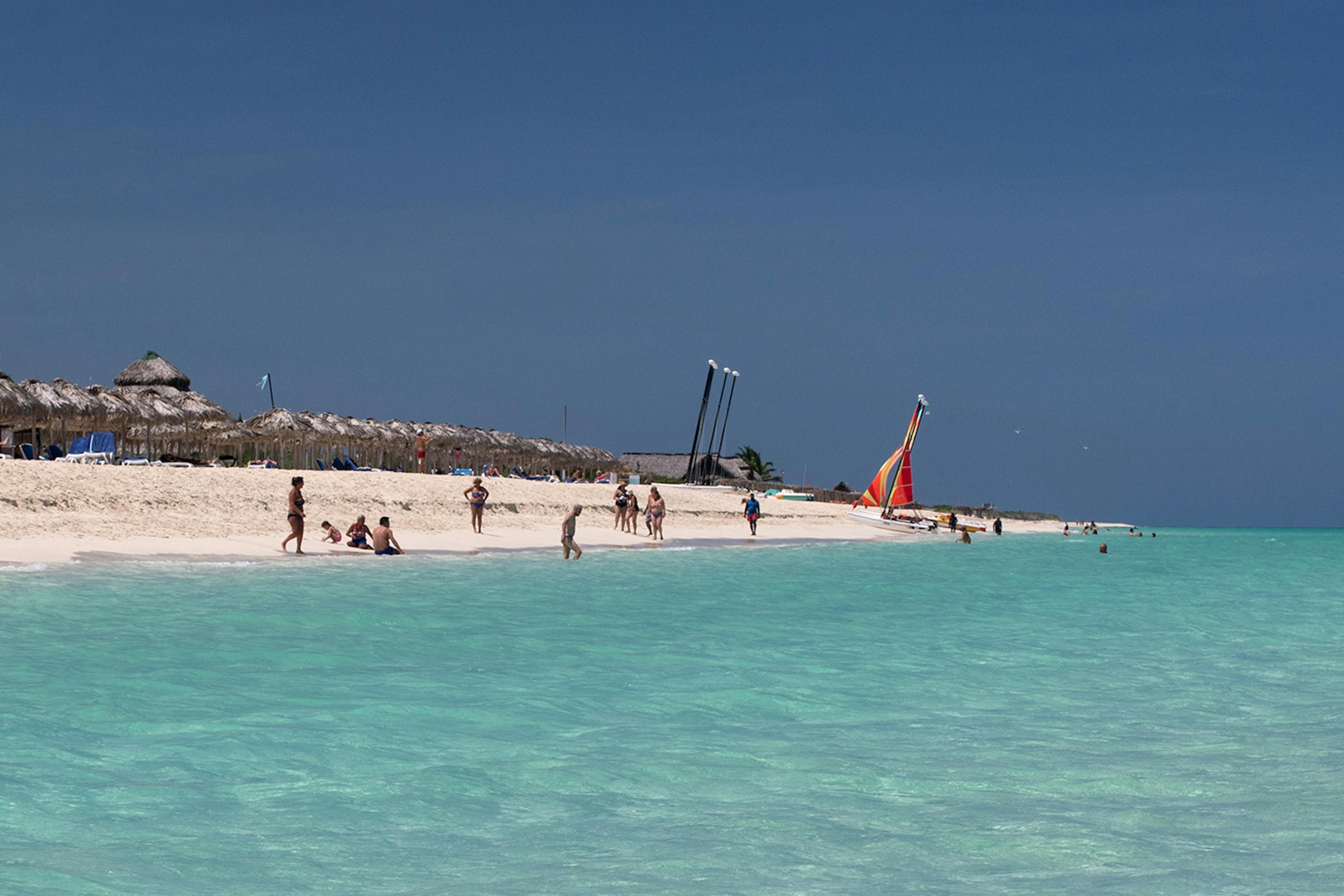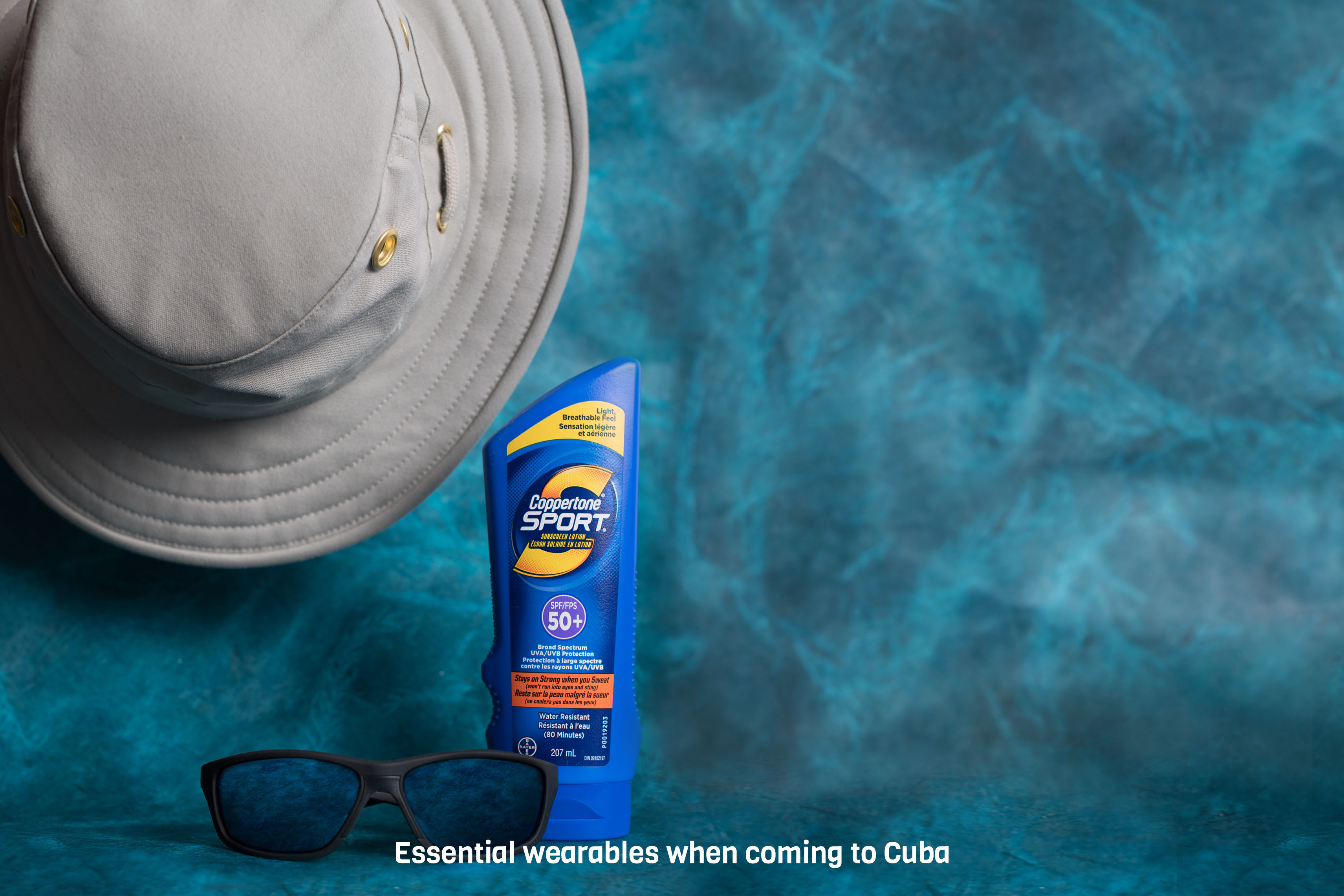
How To Pack For Cuba
Posted 2 years ago - May 2nd 2019

Packing for a trip to Cuba is quick and simple as long as you know what to bring. Of course some of it depends on exactly what you plan on doing but in this post I will recommend the essential items you will need if you are planning to take in the sites and sounds of Cuba.
Quick Checklist
Here are some checklist items that we’ll get out of the way right of the top. Cuba is an all year sun destination so the following are recommended regardless of whether your going to hang at the beach or not:

Clothes
Guys can get away with shorts and t-shirts for most of their stay. If you would like to visit some of the fancier restaurants, a comfortable pair of pants are in order.
I remember I got caught with my pants down so to speak. I wanted to go to the National Theater to watch a ballet show and neglected to bring pants. I had to squeeze into a pair of jeans I borrowed from my friend Yor. For two hours I sat in the balcony hardly able to breath!
For the ladies, shorts, tank tops, a sundress and perhaps a maxi dress for the evening. Leave the high heels and fancy jewelry at home. Cuba is all about casual and some fashionistas might even argue that it’s a little too casual!
The streets and other walking surfaces are not smooth and manicured like they may are in cities in North America or Europe. Walking areas can be uneven and a little treacherous for someone in high heels. The best is something comfortable and cool.
The key for both men and women are fabrics that are light and breathable. I find that cotton works best. Linen looks great and is perfect when there is a breeze but I still find that light weight cotton is the most cool. In the hot summer months, bring plenty of change of clothes as you can hop out of the shower and be sweating within 10 minutes.
Camera
Havana, Trinidad and many other areas in Cuba are a photographer’s dream. I like to tell people that Cuba is so photogenic that the pictures almost take themselves! All you have to do is make sure you have enough batteries and memory cards since both of these items will be next to impossible to purchase during your stay. And of course double check that you have the charger for your camera batteries!

They say that the best camera is the one you have in your hands. Since most of us have phones with pretty good cameras in them, this is not a bad place to start. Camera phones are an ultra portable, no fuss solution.
If you are more serious about photography and want more control over your images, you’ll want to bring something that allows you to shoot in manual mode.
I have walked around the streets of Havana and Trinidad with a big Nikon DSLR but have recently lightened up my gear and now use a Panasonic GH5. These smaller, mirrorless camera systems are much less bulky and a little more inviting to carry around.
Backpack, Carry Bag or Waist Pouch
A small backpack or something to carry around your personal belongings with you. More importantly, it allows you to keep your hands free for more important things like taking pictures!
More recently I have fallen in love with biking around old Havana. It’s such a wonderful way to explore. On my next trip down, I’ll bring a small waist pouch to keep my phone, wallet and keys. It’s so much better than having all of this slide around in your pockets as you are peddling.
Spanish Dictionary
In the big hotels, including restaurants and touristy businesses, you can easily get by with English. But to speak with locals and especially the host at your casa particular, being able to at least try some Spanish is invaluable.
I find having a Spanish dictionary on my phone super useful. I started studying Spanish about 3 years ago and have a conversational level of Spanish. But as you may know, the language requires lots of conjugations and I find myself needing to look up the correct form of verbs at least a few times a day.
Here are my favorite (and free) Spanish dictionary apps I make sure are on my phone before I leave:
SpanishDict

SpanishDict is what I use most. It has all the verbs and shows their different tenses. It’s very easy to use. I find that I can usually find the verb and tense I need quickly and even mid-conversation if necessary.
It also has a translator that seems reasonably accurate and complete. In some cases it will do a literal, word for word translation which is not always correct or how a native speaker would speak. But this is where the examples come in very handy.
The included examples use the expression you are looking for in several sentences and scenarios. This is the most useful feature of the app for me. I’m at that point in my Spanish where I know lots of verbs and nouns but expressions and their context is everything. For examples I really like being able to see all the different ways of saying:
“It’s up to you.”
The examples also help clarify similar words. As in English, we often have several choices of words which can mean the same thing but vary subtly depending on the context. Seeing the word or verb being used in different sentences really helps.
Google Translate

Google Translate is probably the most well known translation app out there. I use it but more as a back up to SpanishDict. Having an app to do straight translation sounds great in theory but in the real world, machines have a way to go yet before they can translate correctly and incorporate proper context.
I’ll use Google Translate to see what it comes up with for the same expression in SpanishDict and vice versa. I see that Google is now using the community to verify expressions and that is great thing.
Linguee

Linguee is all about real world examples. This app crawls the web for translations and provides the results as useful examples. Since internet access in Cuba is challenging, the usefulness of this app without being connected is limited.
Download the Offline Components of All 3 Apps
I highly recommend downloading the offline versions of these dictionaries or translators. Access to the internet is expensive and sometimes hard to find in Cuba so having offline access to these dictionaries invaluable.
Comfortable Walking Shoes
Good walking shoes are the number one item on my list. There are so many things to see and the best way to get around is by your own two feet. Make sure they are comfortable and breathable. I prefer light, meshed based hiking shoes.
In places like Havana and Trinidad there is a lot of uneven pavement. Ladies, leave the heels at home. Unless your primary objective is to hit the clubs and dance the night away, casual and comfortable dress is the way to go for Cuba.
Cash to Exchange for CUC
You will need cash for almost everything in Cuba; it’s a cash society. Ironically you will need to have CUC (Cuban convertible pesos) and the only place in the world where you can buy CUC is in Cuba.
I recommend bringing euro cash to exchange to CUC. It’s not worth exchanging USD because on top of the exchange rate, the bank charges an extra 10% to convert USD to CUC.
The most convenient place to exchange cash is at the airport as soon as you pick up your bags. If you are taking a taxi to your hotel or casa particular, you will need cash right away anyway.

Mosquito Repellant
Mosquitos like to come out at night. They are plentiful in Veradero since there are swampy areas for them to breed. They are less of a problem in Havana but still like to come out in the morning and evening when it’s a little cooler. I like to spray the back of my legs and knee area perhaps once a day and I am usually good.
Dengue fever is a reality in Cuba. It hasn’t been too much or a problem over the past 2 years but many of my friends did have it about 3 years ago. It’s best to protect yourself from mosquitos as best you can.
Sunscreen
The temperature in Cuba is mostly hot all year long. The coldest I have ever witnessed is about 13C (55F°) at night. For most of the year, I find that the temperature hovers just above and below 30C (86F°). Protect yourself from the sun and bring sunscreen from home. Selection in Cuba is limited and if you do find some, it will be expensive and of unknown quality.
Light Rain Jacket and / or Travel Umbrella
Cuba has two seasons: dry season ( November - April ) and rainy season ( May - October ). During rainy season, it may be a beautiful sunny day only to be interrupted by a quick downpour for 20 minutes or so.
In fact this may happen several times a day. I like to have a light rain jacket for these times. I use this one. Something that is water proof but thin and light so that it’s easy to pack.
And there you have it. A trip to Cuba requires a little bit more planning than other places simply because not everything is readily available there. In this article, we talked about some obvious things that you should bring and hopefully mentioned a few things you didn’t think of. See you in Cuba!